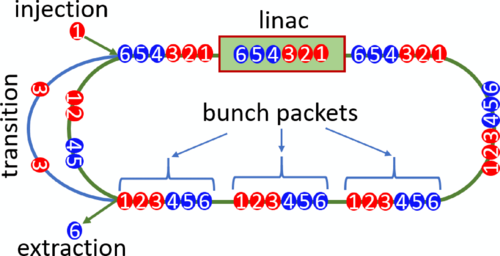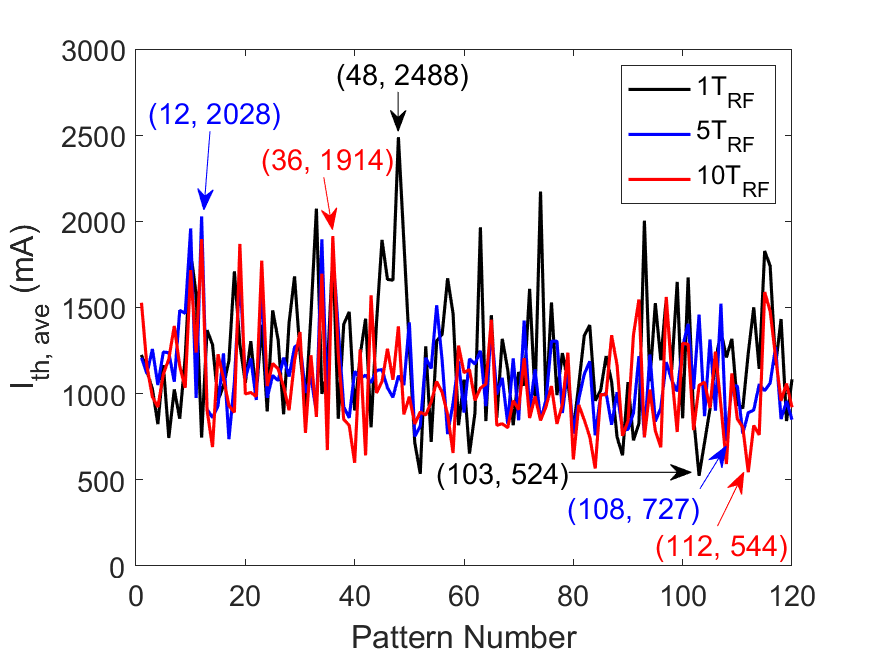Experts from the Cockcroft Institute, UK, have had a paper selected as an "Editor's Suggestion" in Physical Review – Accelerators and Beams for their work on Beam Breakup (BBU) instabilities in Energy Recovery Linacs (ERLs). Drs Rob Apsimon and Sadiq Setiniyaz of Lancaster University Engineering Department, together with Peter Williams of the ASTeC Accelerator Physics Group have authored a ground-breaking paper that describes a method to lift a limitation on the beam current one can support in an ERL.
In the 2020 European Strategy for Particle Physics, superconducting energy recovery linacs were identified as a key accelerator technology requiring priority research and development to underpin the future anticipated needs of the community. Applications in particle physics cover both ERL-based colliders and beam coolers for hadron colliders. ERLs are also seen as a very promising option, in both academic and industrial contexts, for future free electron lasers. They help improve performance whilst cutting energy usage – a true green technology. The more recirculation passes the bunches make, the "greener" the machine is, but at the same time the BBU limit is approached rapidly.
BBU describes a group of instabilities, but for ERLs, the regenerative BBU is the primary limiting factor on the allowed beam current. Due to ground motion and alignment errors, the bunches will pass through the linac with a small transverse offset, which excites additional higher order modes (HOMs) in the cavity. Some of these HOMs can provide a transverse kick to the beam as it passes through the linac. This transverse kick will manifest itself as a transverse offset on the next pass through the linac which will continue to drive the HOM. Above a certain beam current, known as the threshold current, the HOM will grow exponentially until the transverse kicks result in beam loss. The threshold current is usually the limiting factor on allowable beam current in an ERL and maximising it is an essential design constraint.

From previous studies, the authors discovered that the order in which bunches are injected into the bunch packets on consecutive turns, known as the filling pattern, can drastically alter the stability of the RF system due to beam loading, as shown in the figure above. In the figure, we see two different filling patterns and the resulting deviation from nominal cavity voltage from them. For BBU, the same effect happens with HOMs, but the dynamics is more complicated as the phase of the beam loading changes each turn. In addition to the filling pattern, the topology of the beam line will also affect RF stability and BBU as this can allow bunches to switch positions within the bunch packet on each recirculation.

By studying the effect of filling pattern and beam line topology, as indicated in the above figure, the authors showed how the threshold current can be minimised through design optimisation. They demonstrate that for a chosen topology and set of machine parameters, one is able to make a judicious choice of filling pattern. Solving this combinatorial problem both analytically and numerically, they find that the current limit can be raised by at least a factor of 5. This has the exciting consequence that multipass ERLs can perform much better than previously thought. This knowledge and a new ERL tracking code which was developed as part of the study to numerically scan for the best filling pattern to maximise the threshold current will be of great use in the design of future energy recovery linacs.

As can be seen in the figure above, the optimal choice of filling pattern for BBU performance depends on other parameters as well, in this case the bunch spacing. By implementing a global optimisation strategy, one can use the techniques developed to globally maximise the threshold current, or tailor parameters in order to favour a preferred filling pattern and topology based on further design constraints.
Dr Apsimon said: "We are delighted that our work was recognised as an "editor's suggestion" by this important journal. It highlights the quality of the work and the excellent prospects our study offers for the optimisation of future cutting edge research facilities."
More information can be found at:
- S. Setiniyaz, R. Apsimon, and P. H. Williams, "Implications of beam filling patterns on the design of recirculating energy recovery linacs", Phys. Rev. Accel. Beams 23, 072002 – Published 17 July 2020
- S. Setiniyaz, R. Apsimon, and P. H. Williams, "Filling pattern dependence of regenerative beam breakup instability in energy recovery linacs", Phys. Rev. Accel. Beams 24, 061003 – Published 23 June 2021
